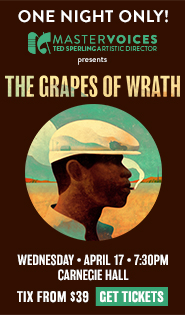Pianist’s return to the stage shows a restless, exciting sense of rediscovery

Pianist Vytautas Smetona performed his first recital in 30 years Friday night at the DiMenna Center.
The most intriguing part of pianist Vytautas Smetona’s bio is that it never bothers to answer the question, “Why?” Why does a talented and promising young concert pianist suddenly stop performing? What does he think about in all those years away from playing in public? And why does he now return to the recording studio and the stage?
Whatever the reasons, it was clear from Smetona’s recital Friday night at the DiMenna Center for Classical Music, that, in the more than 30 years since his last public performance, he had thought a great deal about music. The intrigue of his backstory—the pianist who reappears out of nowhere—turned out to be just a grace note to his exciting and individual musicianship.
His ambitious program leaned heavily on technique, ideas, and stamina. After warming up with his own Capriccio in D Major, a pithy update of Bach and Scarlatti, Smetona played Beethoven’s Op. 57 Sonata, the “Appassionata,” Schumann’s Fantasie in C Major, and then in the second half, Funerailles from Liszt’s Harmonies poetiques et religieuses, and four pieces from Chopin: Mazurka in B-Flat Minor, Op. 24, No. 4, the Op. 10 Etudes 3 and 4, and the Ballade No. 1 in G Minor, Op. 23.
Smetona’s playing was full of physical energy and the sensation of a restless intellectual and emotional life—-as if the long layoff left him full of thoughts that now gushed forth, just on the fine edge of control. The Beethoven sonata was not just impassioned but, at times, on the edge of violence and frenzy. Smetona played the introduction with a feeling of brittle tension, then began smashing out the chords. This is not to say that all he did was play loud and fast—he is capable of a broad range of dynamics, speed, and power—but that his manner of play and thought best expressed themselves with a kind of controlled fury.
His style emphasizes a percussive attack on top of granitic rhythms that keep everything from flying apart. His pulse—especially from his powerful left hand—was essential to his approach, which, refreshingly, was to build dramatic narratives. Smetona didn’t just stitch together musical events, letting the notes tell the story of how they came to be placed one after another, but expressed a real human story.
It was an old-fashioned approach that was true to the music. At the coda in the first movement of the “Appassionata,” there was the feeling that he was wrestling with a great burden, forcing it into place. The lingering effect gave the Andante movement a lyrical feeling, even though the pianist was less interested in a long, legato line. The turmoil of the final movement was unusually intense, the final pages whipping around in the manner of Schnabel, but faster, with more weight and greater precision.
This approach was ideal for the Schumann Fantasie. The work is the centerpiece of Smetona’s new CD, Vytautas Smetona—All the Way Back (Navona), and was one of the high points of the concert. The solid rhythms and unadorned passion transformed Schumann from singer to storyteller, and the music took on the sensation of spoken rhetoric. The piece sounded less episodic than usual—and perhaps less dreamy as well—but tougher and clearer, with a sense of inevitability. The pianist’s playing and thinking were outstanding and utterly satisfying.
Throughout the first half, there were a few, brief moments when Smetona could not articulate the music clearly, but these were ultimately inconsequential, the product of adrenalin and ambition rather than a lack of preparation. And there were no such problems in the second half.
Funerailles was massive—the weight Smetona gave to Liszt’s pesante marking was sufficient to toss boulders around. He marked extreme contrasts between the introduction and the melancholy middle of the piece in a way that was both musically expressive and self-effacing; his rhythmic steadiness warded off any self-indulgent feeling from his great breadth of dynamics, attack, and tempo.
Smteona’s Chopin was clarifying. Free from poetic clichés or a disingenuously objective exploration of technique, Smetona played the music with the explosive physical and emotional power that is intrinsic in every note and phrase.
His rhythmic hesitations in the Mazurka were danceable. The lyricism of his Etudes showed that there was more than just sheer physicality to Smetona’s musicality, and the Ballade was grand—lovely, heartfelt, and then, in the final pages, thrilling. The extreme velocity of the final runs of notes was balanced by Smetona’s humble passion.
Seeming to want to want to make just a bit more music, he played an encore of Chopin’s Mazurka in F Minor, Op. 7, No. 3, with quick simplicity. One is eager to hear what he might do next.



Posted Jun 03, 2015 at 9:33 pm by Barbara Norpoth
I am trying to track anyone down who might inform me of the death of Anthony Smetona of Cleveland Heigths Ohio in 2012. I recently heard of Anthony’s death and have no way to get in touch with the family. Been all over the computer. Thank you most sincerely. Barbara Norpoth, flutist and friend of Anthony’s.
Posted Jul 23, 2015 at 4:48 pm by Joy Kiser
This is Julius Smetona’s business. (Anthony’s brother) I think you can contact him there.